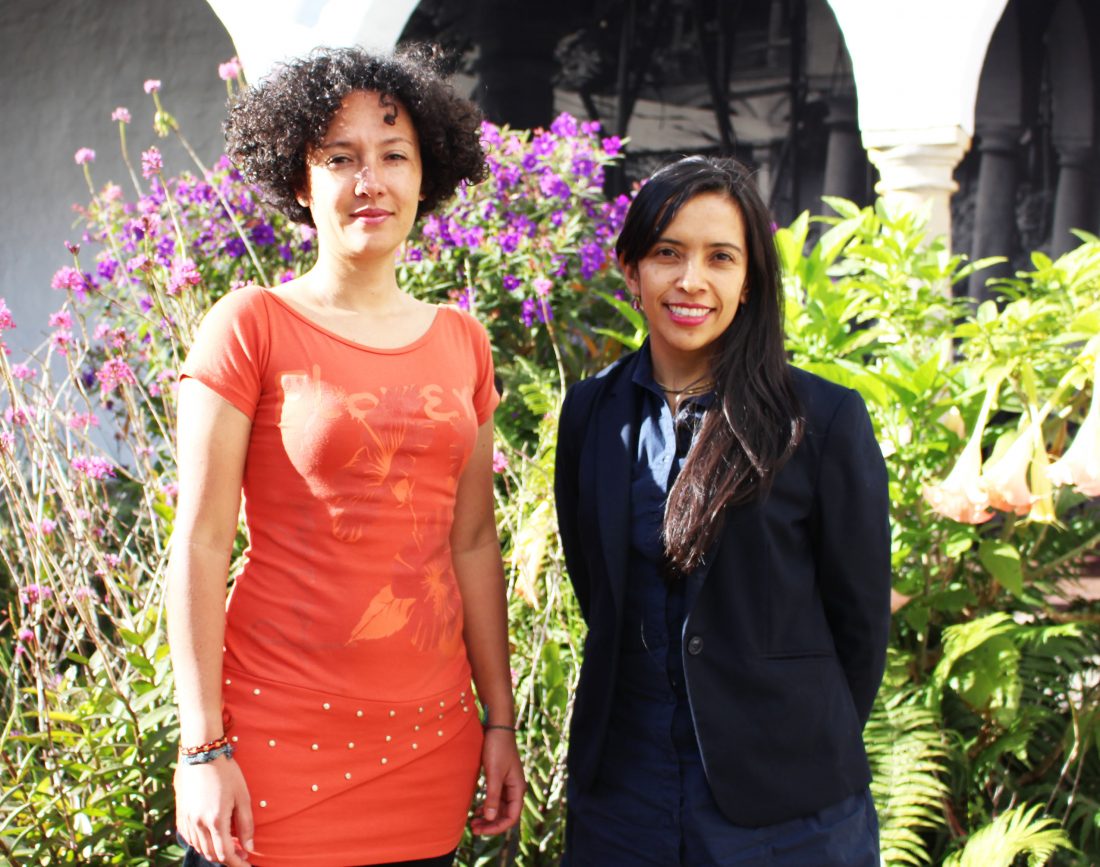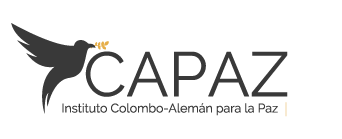
“There is no possibility of being at peace with the other, if there is no respectful relationship with the environment around us”
On August 26, 2019, a disturbing early warning was issued regarding the risk currently faced by members of Movimiento Ríos Vivos, especially Isabel Cristina Zuleta, leader and founder of the movement.
On August 29, 2019, the CAPAZ Institute spoke with Isabel Cristina Zuleta, to better understand the current situation of the population affected by the Hidroituango megaproject, as well as the current risk, which the movement is facing.
Isabel Zuleta was a finalist for the National Award for the Defence of Human Rights 2019 in the defender of the year category and winner of the same award for the collective process category in 2018.
In 2018, CAPAZ was joined by Isabel Zuleta as a panellist at the International Congress on Peacebuilding in Colombia. Since then, Movimiento Ríos Vivos has been linked as a civil society organisation to some of the events organized by CAPAZ, research, and knowledge dissemination exercises.
CAPAZ: What is the current socio-economic and ecological situation that Movimiento Ríos Vivos is protesting about to the Colombian institutions? What are the risks that have led you to exercise activism in vindication of your rights?
Isabel Cristina Zuleta (ICZ): The current situation is complicated because the Hidroituango megaproject continues to generate risk. The entire upper zone of the megaproject, i.e., the flooded zone, generated great instability in the territory. Since last year’s tragedy when those tunnels were plugged without having finished the work, we have been demanding clarification about the risks of the work so that the community knows whether it should flee as soon as possible or whether it can stay in the area and until when. At the moment, there is total uncertainty about Hidroituango. Downstream the risk is generated because last year, in May and as a consequence of a landslide, there was a sudden clogging of the only tunnel where the water was passing because EPM (Empresas Públicas de Medellín) had blocked the other tunnels with cement. Since the technical conditions of this third tunnel were not met, the opening generated an avalanche that destroyed bridges, houses, and left the population at risk, a situation that has not yet been resolved. We feel abandoned by the Colombian State in the face of the damages and risks generated by a mega-project that we did not ask for and that has caused great social, economic and environmental damage.
Although we managed to get a criminal guarantees judge to grant us precautionary measures related to our environmental criminal complaint for all the damage that Hidroituango is causing to ecosystems and natural resources, the situation is not encouraging. One of the precautionary measures is a technical table to give us an answer about the instability or stability, and therefore viability or not of the work. Faced with the possibility that in these technical discussions it may be concluded that the project is unfeasible, or that the project may be suspended until certainties are reached, there are uncomfortable political sectors that affirm that we are putting at risk the future of engineering, development and energy in Colombia. According to these sectors, Hidroituango is the country’s most promising project.
The second measure was the protection of the rights of the population, to assistance, to the guarantee of life, and above all to a dignified life, but this has not worked very well either, because the institutions are not willing. The fishing population has been without a livelihood for six months and in general there is no access to food. We also have a very serious public health situation. On the one hand, we have more than 250 cases of leishmaniasis among the population. We have not yet been told what causes the sudden outbreak of this disease in the population, and the treatment is very toxic. Medical care is very bad and five people have already died from this cause. On the other hand, there are many people with post-traumatic stress who have not received psychosocial care. The avalanche, the landslides and the loss of the river have generated a massive shock in the population and there is no one to assist them.
CAPAZ: In connection with the social, economic, and ecological effects of Hidroituango, there is an aspect related to the victims’ and society’s right to the truth. In the area, there have been many forced disappearances and murders of residents throughout the armed conflict, and there have been reports of mass graves. The mega-project passes or intends to pass over these mass graves and you have requested the Special Jurisdiction for Peace – JEP for precautionary measures, so that the right of victims to find their dead is protected. What are these precautionary measures from the JEP and what does this possibility mean for you?
ICZ: In 2010, we began to report the existence of mass graves in the territory. We know of their existence because we have witnessed the atrocities committed by the different actors in the armed conflict over so many years. These same armed actors often forced the peasants to bury the victims. On other occasions, the bodies were thrown into the Cauca River and the barequeros (ancestral miners) and fishermen who found them, buried them on the banks of the river because, according to our culture and beliefs, you have to die on land and not in water. That means that by direct knowledge, we know that these common graves have existed and still exist.
That is why we asked the megaproject not to damage those sites, because we believe that there are families who are still looking for their dead and will be at peace until they are found, and because it is important for Colombia to find the disappeared who could be there. Unfortunately, the megaproject flooded and has built camps on these sites even though we have warned them of their existence. Thanks to our struggle, 159 bodies were recovered before the flood, but we know that there are many more.
As such, the precautionary measures granted to us by the JEP to protect these sites are of very deep ethical, moral and spiritual value, as they agree that we must continue to search for the disappeared despite the circumstances. We will soon have a public hearing with the JEP on this matter to agree on the methodological, logistical and technical aspects so that more specific measures can be taken directed at EPM or Colombian State institutions.
CAPAZ: We have heard about an early warning of risk issued to demand that the Colombian State take adequate prevention and protection measures for you. What is the current risk situation for the leaders and members of Movimiento Ríos Vivos?
ICZ: Some political-electoral organisations are uncomfortable with our claims, and have openly said that we should not look for the disappeared or allude to the 134 massacres that occurred in the territory affected by Hidroituango. There are sectors that see their interests at risk with the precautionary measures granted by the judge and even more so with the next hearing to be held by the JEP on the graves and bodies of disappeared persons that flooded Hidroituango.
This discomfort has been expressed through different strategies, especially smear, stigmatisation and persecution of the Movimiento Ríos Vivos. At this moment they are collecting signatures to discredit us and say that the movement does not represent the population when we are the population itself. Although we are a movement that represents a small portion of the entire affected population, some 1,200 families opposed to the project, we have the right to dissent and denounce the human rights violations that have been occurring. They tell people that I, as a leader, by making these kinds of denunciations, damage the image of my municipality (Ituango) and of the country (Colombia), by reporting human rights violations. They say that we lied to the judge and the institutions and that is the reason why they granted us the precautionary measures.
In addition, EPM has initiated a very strong campaign that generates ruptures and shocks in the population by hiring more than 90 leaders who are paid $850,000 COP per month to represent the interests of the company. Given the precariousness of the situation, it is understandable that people need this money and believe it is right to work for EPM. These leaders now say that we have hindered the negotiations when not only is it not true, but we also seek negotiations under fair conditions. That is very tricky, because we have never criticised people for receiving aid or food, or having their housing rebuilt. What we have said is that this is not enough and we need to be told what is going to happen to life, what is the future of the region, and to make comprehensive reparation for all the damage they have caused.
We have asked for the penal sanction of those who have harmed us so much and this has caused a great stir in the area. This has generated great persecution, because it seems to them that we want the manager of EPM to go to jail, but we only filed the complaint and it will be a judge of the Republic who will determine whether he should go to jail or not.
In addition to persecution, there are threats all the time and unfortunately we have become accustomed to receiving them. Almost weekly we receive threats via Twitter, Facebook, email, phone calls, text messages, etc. We have reported them, but nothing happens and we become resigned to them.
But since last year, in particular, we have been subject to the harassment of the families of the members to the point that six relatives of leaders of the movement have already been murdered. My family has been persecuted recently. They have begun a campaign for what they call “unmasking me,” because they say “I must be hiding something if I am reporting a development project”. Then they ask my family: How is it possible that you have a daughter, granddaughter, aunt like that? They tell my family that they are investigating me and they are under great social pressure. This is something very painful and attacks the centre of the struggle that is also for the future of the family.
Last year, two of the movement’s leaders were assassinated and a total of five have been killed, plus the relatives already mentioned. That’s why it’s important to be alert, because before each concrete attack, there’s a favourable environment that makes the attacks possible. In 2019, a leader of the movement had to leave the country. In a pamphlet it said that “all members of the Movimiento Ríos Vivos must be killed, especially its founders,” and then a person directly approached the other leader’s village and told him that he could no longer be a member of the movement and to tell me that they were going to kill me even if I had a security scheme. Every time this climate is created, we have told the state that it is necessary to act before the deaths occur, but they have not listened to us. It is happening now, there is an atmosphere of persecution and harassment, of stigmatisation of the movement and we are calling for prevention measures, because we know that something very bad can happen to us.
CAPAZ: What concrete measures do you think should be taken, not only by the Colombian State, but also by the international community?
ICZ: We thank the international community for the reception programmes, which facilitate the temporary departure of those at imminent risk, as a protective measure. The vice-president of the movement, Milena Flores and Genaro Graciano, one of the founders left the country through a reception programme in Spain in view of the risk they faced, so we are grateful for this possibility that they have given us.
Secondly, we believe that the international community must take responsibility for what happens to us. Behind the mega-project there are German, Canadian, Brazilian, Swiss banks, and -mostly German- insurance companies, and Swedish and German companies that have sold machinery, among others. We appreciate the solidarity and we continue to require it from the international community, but we also consider that they bear a part of the responsibility towards the population, because how can it be ok for a bank to give money to a project that does so much damage and that persecutes people who simply ask that the right to life be respected, that the environment, biodiversity and the rights of the communities be cared for? There are safeguards that should have been complied with and they were not.
The climate crisis is telling us that rivers should not be dammed or diverted and that forests should not be cut down or flooded to do this work. In a strict sense, the damage is not only for us as those directly affected, but for all of humanity.
The main measure that the Colombian State must grant us is to overcome impunity, to punish those who stigmatize and harm us, to take concrete measures against hate speeches, to have officials fired and sanctioned when they discriminate against us or condemn our position in relation to Hidroituango. But it must also provide us with guarantees to remain in the territory in dignified and safe conditions, implementing the Movement’s current Prevention and Protection Plan, put together in conjunction with the Ministry of the Interior but which so far has not been complied with.
CAPAZ: In the current post-agreement context, how do you think environmental peace can be built?
ICZ: There is no possibility of being at peace with the other, if there is no respectful relationship with the environment around us and if there is no effective right to a healthy environment for all. This means that the air has to be breathable, that the water has to be clean, and that the mountains have to be firm, not as it is happening to us now. If there is no possibility of that, there is no peace. For us, nature is not the subject of rights because we grant them, but rather a subject of decision. There is no possibility of peace with nature if actions of aggression continue against it. Colombia needs clarity in terms of its social and environmental priorities in order to advance in terms of peace building.
(Interview by Juliette Vargas. Revision: Stefan Peters, Claudia Maya. Photos: Carolina Cerón. English version: Tiziana Laudato)





